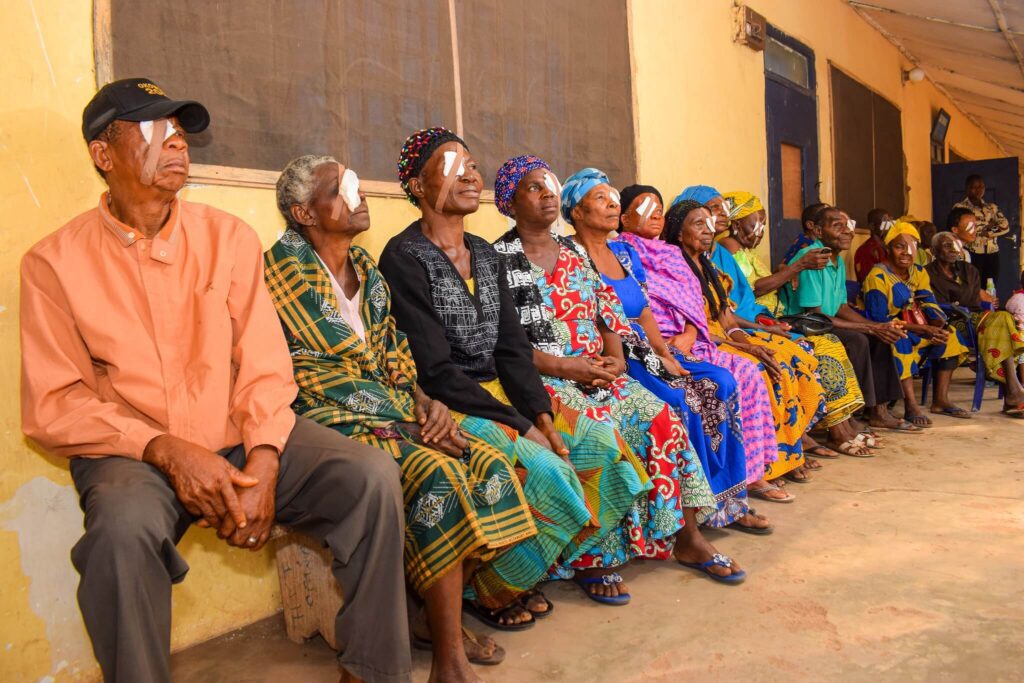Our Mission
Society for Awareness of Neglected Diseases© (SAND) is a student-led 501(c)(3) nonprofit organization with a mission to raise awareness of neglected tropical diseases among high school and undergraduate students enrolled in the health sciences and aspiring to become healthcare professionals. SAND also provides secondary and postsecondary students enrolled in the health sciences with the opportunity to generate global awareness and critical debate in Neglected Tropical Diseases.
Neglected tropical diseases (NTDs) represent a group of chronic, debilitating infections common in subtropical and tropical regions of Africa, Asia, and the Americas. They are primarily found among low-income populations and impoverished communities who have limited access to clean water, adequate sanitation, and quality health care. Twenty NTDs are prioritized by the World Health Organization (WHO).
One out of every five people on the planet requires annual treatment to prevent neglected tropical diseases. Neglected tropical diseases threaten more than 1.6 billion people including nearly 1 billion children with stunted growth, irreversible blindness, swollen limbs, and excruciatingly painful itching.
SAND has decided to focus on three particularly troubling NTDs, namely Trachoma, Onchocerciasis (River Blindness) and Lymphatic Filariasis (Elephantiasis).
Trachoma

Key Facts
- Trachoma is a chronic exacerbating and remitting chlamydial conjunctivitis (eye disease) caused by infection with the bacterium Chlamydia trachomatis that is common among children ages 3 through 6 in certain resource-limited areas worldwide.
- About 7% of patients develop decreased vision or blindness; trachoma is the leading cause of preventable blindness worldwide.
- Diagnosis is usually clinical, but standard methods to detect chlamydia can be done when available.
- It is a public health problem in 39 countries and is responsible for the blindness or visual impairment of about 1.9 million people. Blindness from trachoma is irreversible.
- Based on April 2024 data, 103 million people live in trachoma endemic areas and are at risk of trachoma blindness.
- Infection spreads through personal contact (via hands, clothes, bedding or hard surfaces) and by flies that have been in contact with discharge from the eyes or nose of an infected person.
- Initial symptoms are conjunctival hyperemia, eyelid edema, photophobia, and lacrimation. Later, corneal neovascularization and scarring of the conjunctiva, cornea, and eyelids occur.
- With repeated episodes of infection over many years, eyelashes may be drawn in so that they rub on the surface of the eye. This causes pain and may permanently damage the cornea (trachomatous trichiasis).
- For endemic areas, the World Health Organization (WHO) also advocates corrective surgery, mass administration of antibiotics, facial cleanliness and environmental interventions to reduce transmission.
- In 2023, 130,746 people received surgical treatment for advanced stage of the disease, and 32.9 million people were treated with antibiotics. Global antibiotic coverage in 2023 was 29%.
Onchocerciasis (River Blindness)

Key Facts
- Onchocerciasis (äŋ-kō-ˌsər-ˈkī-ə-ˌsēz), commonly known as “river blindness”, is caused by the parasitic worm Onchocerca volvulus (filarial nematode).
- The parasite is spread and transmitted to humans by the repeated bites of infected blackflies that breed in rapidly flowing rivers.
- Onchocerciasis is most prevalent in sub-Saharan Africa, where >99% of the world’s cases are found; the remaining 1% of cases occur on the border between Brazil and Venezuela
- The disease is endemic in areas where blackflies thrive, particularly in communities located near rivers and streams where the flies breed.
- Symptoms include subcutaneous nodules, intense pruritus, dermatitis, adenopathy, atrophy, disfiguring skin conditions, and eye lesions that may lead to permanent blindness.
- Diagnosis is by finding microfilariae in skin samples, the cornea, or the anterior chamber of the eye; identifying adult worms in subcutaneous nodules; or using polymerase chain reaction (PCR) to detect parasite DNA.
- The disease primarily affects rural populations in sub-Saharan Africa, and Yemen, with smaller endemic areas foci found in parts of Latin America.
- Population-based treatment with ivermectin (also known as mass drug administration or MDA) is the current core strategy to eliminate onchocerciasis, with a minimum requirement of 80% therapeutic coverage. Ivermectin is donated by Merck & Co., Inc. (MSD outside of the United States) under the brand name of Mectizan®.
Lymphatic Filariasis (Elephantiasis)

Key Facts
- Lymphatic filariasis is a preventable mosquito-borne infectious disease caused by any of 3 species of parasitic filarial worms, namely Wuchereria bancrofti, Brugia malayi, and Brugia timori.
- Wuchereria bancrofti is present in tropical and subtropical areas of Africa, Asia, the Pacific, and the Americas, including Haiti. Brugia malayi and Brugia timori are common in South and Southeast Asia.
- Usually acquired in childhood, it is a leading cause of permanent disability worldwide, impacting over 100 million people and manifesting itself in a variety of severe clinical pathologies
- Infection by the filarial parasites impairs the lymph vessels, where the worms nest, later manifesting as hydrocele, lymphedema, and elephantiasis, resulting in unnecessary physical and mental suffering.
- Worms can survive within the human body for up to 8 years, all while reproducing millions of larvae which circulate through the blood. Acute symptoms include fever, lymphadenitis, lymphangitis, epididymitis, and funiculitis (inflammation of the spermatic cord).
- Chronic symptoms include abscesses, hyperkeratosis, polyarthritis, hydroceles, lymphedema, and elephantiasis.
- The parasite impairs the lymphatic system and can lead to the abnormal enlargement of body parts, severe disability and social stigma.
- The infection is diagnosed when worm larvae (microfilariae) are identified in a sample of blood or tissue, or by antibody or antigen detection.
- Over 657 million people in 39 countries worldwide are at risk for lymphatic filariasis and require preventive chemotherapy to stop the spread of this parasitic infection.
- While most cases have no symptoms, some people develop a syndrome called elephantiasis, which is marked by severe swelling in the arms, legs, breasts, or genitals.
- Prevention can be achieved by treating entire groups or populations affected by the disease, known as mass deworming, preventive chemotherapy or mass drug administration (MDA). This is done every year for about six years to rid a population of the disease entirely.
- People are usually treated with diethylcarbamazine, which kills the immature larvae in the blood and some of the adult worms.
- More than 9.7 billion cumulative treatments have been delivered to stop the spread of infection since 2000.
- As of 2018, 51 million people were infected – a 74% decline since the start of WHO’s Global Program to Eliminate Lymphatic Filariasis in 2000.
- Due to successful implementation of World Health Organization (WHO) strategies, 871 million people no longer require preventive chemotherapy.





